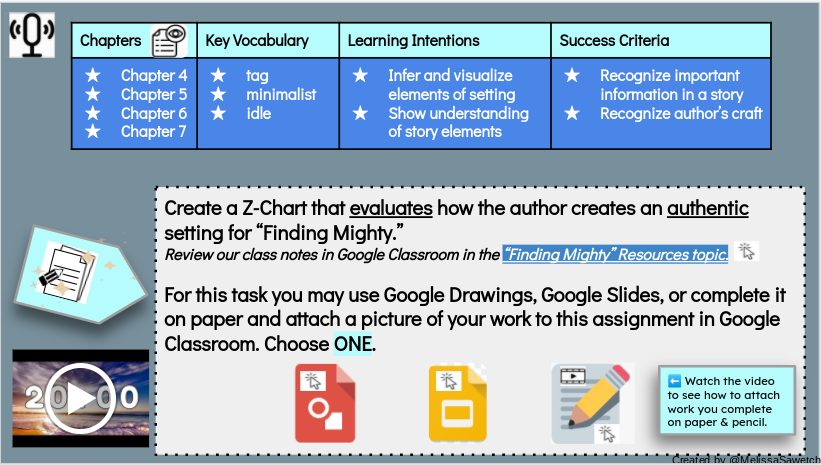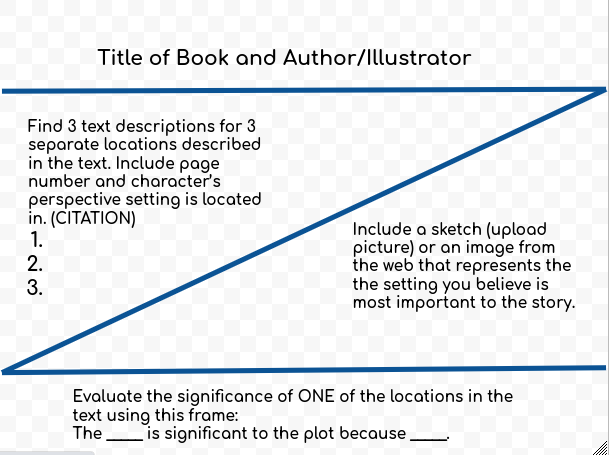Book Study "Finding Mighty" ~ Week 1 Reflection
- Melissa Sawetch

- Oct 3, 2020
- 3 min read
Updated: Oct 10, 2020
We began a new book this week. "Finding Mighty" by Sheela Chari. I am very excited for this book study and so are the kids! Not only is it a mystery and told from multiple character perspectives, it focuses on urban art forms and parkour as well, which makes the story very engaging for all my students! Living in Worcester, they see a lot of urban art throughout the city. We began our instructional unit by exploring images of local urban art and learning about the history of graffiti to then make a claim if graffiti should be considered vandalism or an art form.
To introduce students to the book, they read the blurb and reviews of the book, as well as watched a book trailer to gather information about the characters, setting, and problem of the text. They used this "bite-size" information to make a prediction of what they thought will happen in the story.

To provide my students with the best possible reading experience during this book study, I embedded voice notes, timers, visual cues, graphic organizers, and opportunities for student voice and choice in activities to show they comprehension.
audio notes on each slide reading the text
audio recordings of the text on youtube with closed captions
visual cues for directions (see slide below)
embedded timers to keep students on track with recommended length of time for completion
vocabulary flashcards for text using audio, images, and gifs (see my post for using publish to web)
students choice in how to present knowledge of mini-lessons (elements of genre, setting)

Students read Chapters 1-7 throughout the week. They could access the text digitally or listen to my audio recordings. We had lessons on the genre of the text and studied specific characteristics of mystery and realistic fiction. We spoke about how the characters, plot, and setting must be believable within this genre. Then, students chose one of three tasks to prove that "Finding Mighty" is a mystery by focusing on the believability of the characters, setting, and plot.

Next, we focused on visualizing the setting and evaluating how the setting is believable and what locations are significant to the plot. Students had choices in how to represent their visualization of the setting. Students used a z-chart to communicate our understanding of the setting. Students had to use text evidence to support their evaluation of the setting and explain why the location they focused on is significant to the plot.
Each day day of instruction begins with a review of our learning intentions and success criteria, as well as a review of important vocabulary from the text. For each "set" of chapters I focus on 3-4 critical words to developing comprehension to the story. We continue to review the words every day during instruction and the expectation is that students stretch themselves to use the words in their work about the book. This information is also provided on every slide of the digital notebook used for the study of this text for students to access at any time. This helps to accommodate learners who need repeated directions (an audio recording is also provided), students who had connection issues, or students who were absent.

Next week we will focus on analyzing character perspectives and traits that make them believable. We will also be identifying events that are significant to the plot and composing a summary of the first quadrant of the text, using text evidence to make connections to real-life circumstances and predictions of what will happen next in the story.
My Reflection: Overall, this went very well with students. They are enjoying the book so far. They especially appreciate the real-life connections they can make to urban art and living. I had planned for more instruction this week; however, we did not get that far. I am realizing that even though I knew things take longer, learning tasks are taking even longer than I anticipated. However, the learning tasks are more focused and require deeper comprehension of the learning standard, so I am considering it a worthy trade off for now. My students with disabilities are still having some difficulty accessing materials, so I will be focusing this week on making everything even more accessible for their unique learning needs. Any tips are greatly appreciated!
My lesson plans continue to decrease in the number of standards focused on. Even though I have been intentional to focus one a smaller number of learning standards each week, I am finding it is still too much for this virtual environment. This week we also had two district-assessments that students had to take. That was approximately 1 - 1.5 day's worth of instruction that was lost. Yes, I now have data to analyze, but I still question the validity of any assessment that is not project-based for remote learning. Therefore, I consider it a loss of instructional time.







Comments